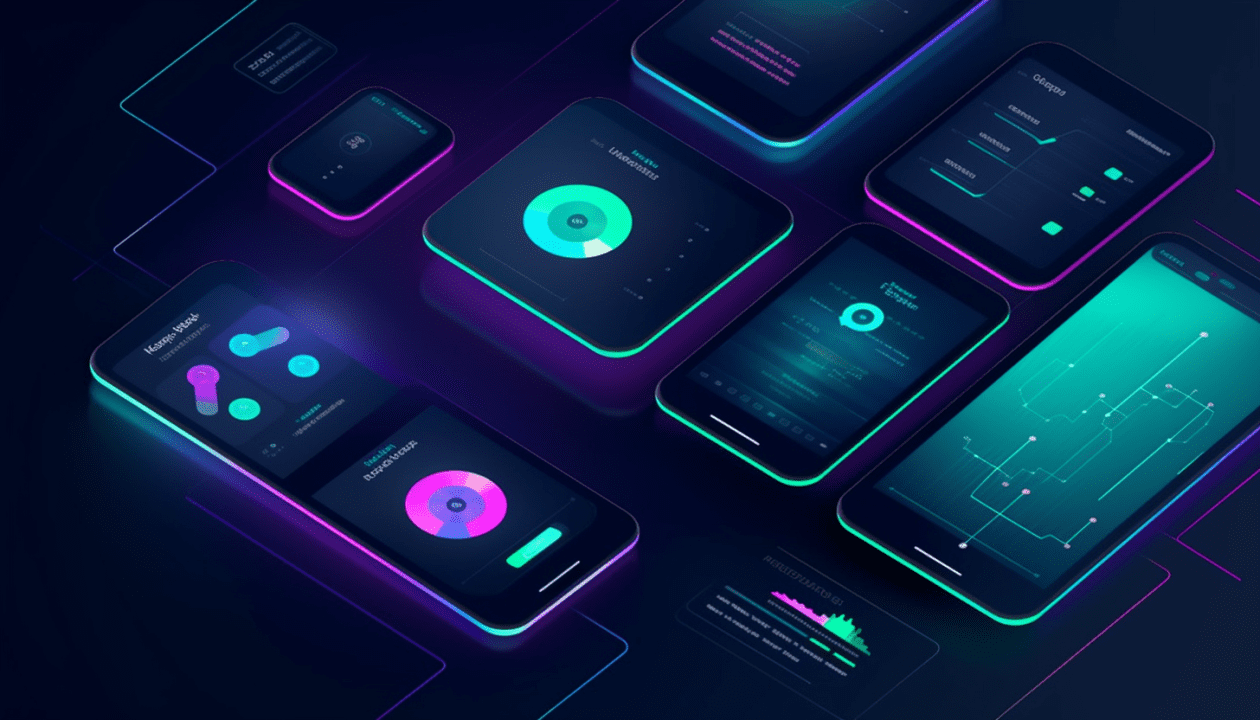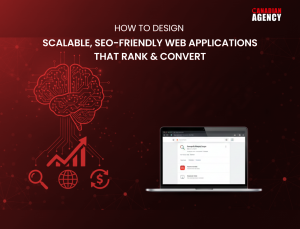With a market value of over $136 billion in 2022, AI development is transforming enterprise UX design, which is expected to grow 13x in the next eight years. Its integration enables tailored experiences, operational efficiency, and adaptability. The role of AI in UI/UX design is significantly increasing.
AI systems swiftly handle repetitive tasks, allowing individuals to focus on complex activities that require human judgment and compassion. .Artificial intelligence consistently excels human capabilities in data organization and display, revolutionizing user experience. This article explains AI’s remarkable influence on UX design, unveiling its efficiency and unmatched prowess in presenting data for flawless digital interaction.
Role of AI in UI/UX Design: How It Transforms User Experience
AI-generated UI elements are reshaping user experiences in unique ways. By analyzing vast amounts of user data, AI empowers UX designers to create personalized and intuitive interfaces.
AI is revolutionizing the way users interact with digital products. With natural language processing and machine learning algorithms, AI enables conversational interfaces, simplifying interactions and eliminating friction points. This seamless interaction significantly enhances user satisfaction and makes technology more accessible to a broader audience.
Incorporating AI in UI/UX design allows for data-driven decision-making. By analyzing user behavior, AI assists designers in making informed choices to optimize user flows, improve usability, and address pain points effectively. The result is a design that resonates with users and keeps them coming back for more.
Innovative Ways to Implement AI in UI/UX Design:
Data-Driven Design Decisions:
AI empowers designers to make data-driven design decisions by analyzing user behavior and feedback. This data-driven approach ensures that design choices align with user needs, resulting in more user-centric and effective designs.
Real-Time Personalization:
AI can dynamically personalize user experiences based on user interactions in real-time. This level of personalization creates more engaging and relevant experiences, leading to increased user satisfaction and retention.
Conversational Interfaces:
AI-powered chatbots and virtual assistants provide conversational interfaces, offering users a consistent and interactive experience. These interfaces can handle user queries, assist with tasks, and improve user engagement.
Advantages of AI in UI/UX:
The following passage underlines the benefits of leveraging AI in the UI/UX domain:
Enhanced Personalization:
AI-driven UI/UX design allows for hyper-personalization, tailoring user experiences based on individual preferences, behavior, and demographics. By analyzing vast datasets, AI can deliver content, product recommendations, and interactions that resonate with each user, leading to higher engagement and customer satisfaction.
Improved User Engagement:
With AI’s ability to understand user intent and context, UI/UX designers can create more engaging and interactive experiences. AI-driven chatbots and virtual assistants, for example, facilitate natural language conversations, making interactions more conversational and intuitive for users.
Streamlined User Journeys:
AI helps optimize user journeys by identifying pain points and areas of friction. By analyzing user behavior and feedback, designers can implement changes that streamline navigation and enhance the overall user flow, leading to a smoother and more seamless experience.
Predictive Analytics and Insights:
AI-powered predictive analytics empowers designers to anticipate user needs and preferences, allowing for proactive design improvements. By leveraging data insights, designers can make informed decisions, stay ahead of user demands, and create designs that meet future requirements.

Limitations and Challenges of AI in UI/UX:
Ethical Concerns:
AI in UI/UX design raises ethical considerations regarding user privacy, data security, and transparency. Designers must be cautious in handling sensitive user data and ensure that AI-generated designs do not infringe upon user rights or compromise user trust.
Overreliance on Automation:
While AI offers significant advantages in automating repetitive tasks, overreliance on automation can lead to a lack of human creativity and emotional intelligence in the design process. Striking the right balance between AI-driven automation and human ingenuity is crucial to maintaining unique and innovative design solutions.
Limited Understanding of Context and Intent:
AI, while powerful, may still need help to fully comprehend the context and intent of users in certain situations. This limitation can lead to misinterpretation of user queries and potentially result in suboptimal user experiences.
Lack of Emotional Intelligence:
AI cannot truly understand human emotions and empathy. Designers must complement AI-driven insights with their understanding of human behavior and emotions to create designs that connect with users on a deeper level.
UX Designers and AI: How They Can Work Together
Contrary to concerns about AI replacing human designers, the future lies in collaboration. By embracing AI as an essential tool, UX designers can elevate their creative processes and augment their abilities. Through this synergy, designers can focus on creativity, innovation, and understanding user emotions while AI handles data analysis and repetitive tasks.
Moreover, Adopting AI as a necessary tool allows designers to enhance their creativity and concentrate on user emotions while AI takes care of data analysis and monotonous duties. AI’s data-driven insights improve user experiences by addressing pain spots, improving usability, and optimizing user flow. But unlike human designers, AI lacks emotional intelligence and inventiveness. Through their collaboration, designers are more equipped to infuse their work with empathy and a human touch, creating stronger bonds with users.
With the help of this collaboration, designs are improved repeatedly, resulting in excellent user experiences. Together, they form a future where AI-powered UX design transforms digital interactions, creating individualized, wise, and compelling experiences that deeply connect with consumers.
AI Tools for UI/UX Designers:
The following AI tools empower UI/UX designers by automating repetitive tasks, providing valuable insights, and facilitating seamless collaboration, ultimately resulting in more efficient and innovative design processes.
Figma:
Figma is a collaborative design tool that leverages AI to enhance the UI/UX design process. It allows designers to create interactive prototypes, conduct user testing, and collaborate with team members in real time.
Adobe Sensei:
Adobe Sensei is Adobe’s AI technology that assists UI/UX designers in automating repetitive tasks, such as image editing, content generation, and layout adjustments. It also provides valuable insights and recommendations to optimize designs.
Sketch2React:
Sketch2React is an AI-powered tool that transforms Sketch designs into interactive code components. It streamlines the design-to-development process, enabling designers to effortlessly create responsive and interactive interfaces.
InVision Studio:
InVision Studio integrates AI-powered design tools to streamline UI/UX workflows. It offers auto-layout, responsive design, and dynamic content to enhance collaboration and accelerate design iterations.
Zeplin:
Zeplin is an AI-driven design handoff tool that bridges the gap between designers and developers. It automatically generates style guides, CSS code snippets, and assets, ensuring a smooth transition from design to development.
UXPin:
UXPin is a prototyping and collaboration platform that employs AI to optimize design workflows. Its AI-powered design system manager helps maintain design consistency, version control, and team collaboration.
Will AI Replace UX Designers?
The question of whether AI will eventually replace UX designers entirely has been a subject of ongoing discussion in the design community. While AI brings significant advancements and efficiencies, it is unlikely to return human designers. UX designers possess a unique blend of creativity, empathy, and critical thinking, crafting emotionally resonant designs and adapting to user feedback. Their user-centered approach, interdisciplinary skills, and adaptability make them invaluable in creating exceptional user experiences.
So, AI will continue to play a significant role in UI/UX design, and the future lies in a collaboration where designers leverage AI’s capabilities as a powerful tool to enhance their creative process, efficiency, and data analysis while retaining the unique human insights that shape exceptional user experiences.
AI’s Impact on UX Design Accuracy:
One of the key areas where AI excels is in understanding user behavior and preferences. AI-powered analytics tools can process vast amounts of user data, enabling designers to gain valuable insights into user interactions with digital products.
Additionally, AI’s real-time personalization features have significantly enhanced the accuracy of user experiences. Moreover, AI has also transformed A/B testing, making it more efficient and accurate. Automated A/B testing tools powered by AI can rapidly test multiple design variations and analyze the results to determine which design performs better.
AI’s impact on UX design accuracy stems from its ability to process vast amounts of data, identify patterns, and deliver real-time personalization. By embracing AI as a valuable tool in the design process, designers can create more accurate, data-driven, and user-centric experiences that resonate deeply with users.
Conclusion
In conclusion, the role of AI in UI/UX design revolutionizes user experiences through personalized interfaces and data-driven decisions. Embracing AI responsibly and collaborating with human designers paves the way for a future where AI-powered UI/UX truly transforms the digital landscape.
As a top-notch UI/UX design services provider, our Canadian agency embraces AI tools for creativity, efficiency, and human touch. Partner with us to deliver tailored, data-driven, and user-centric experiences. Let’s shape the future of AI-powered UX together. Contact us for transformative design solutions.




